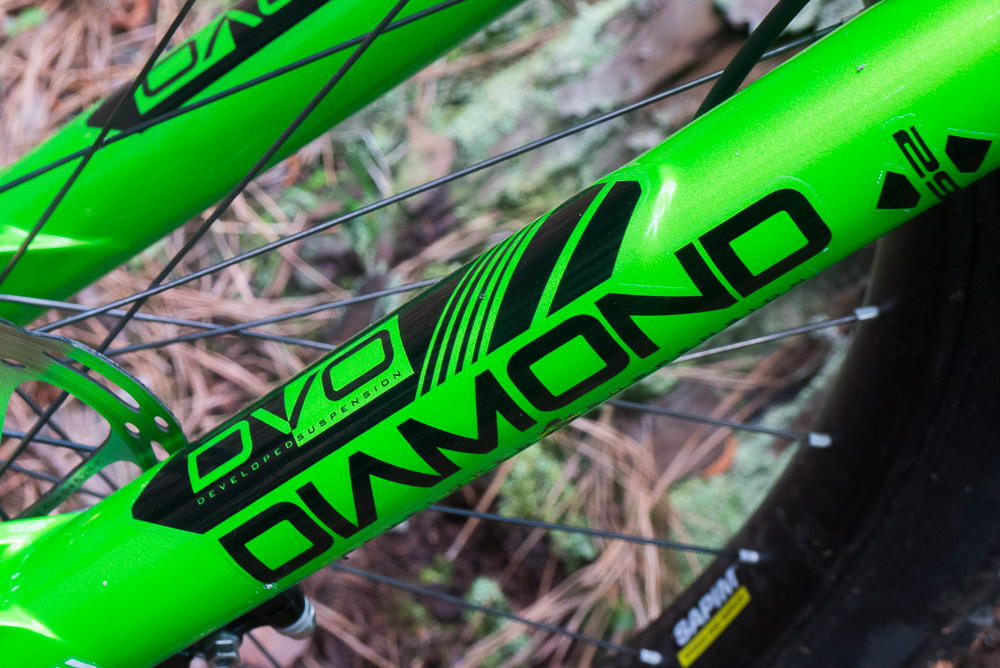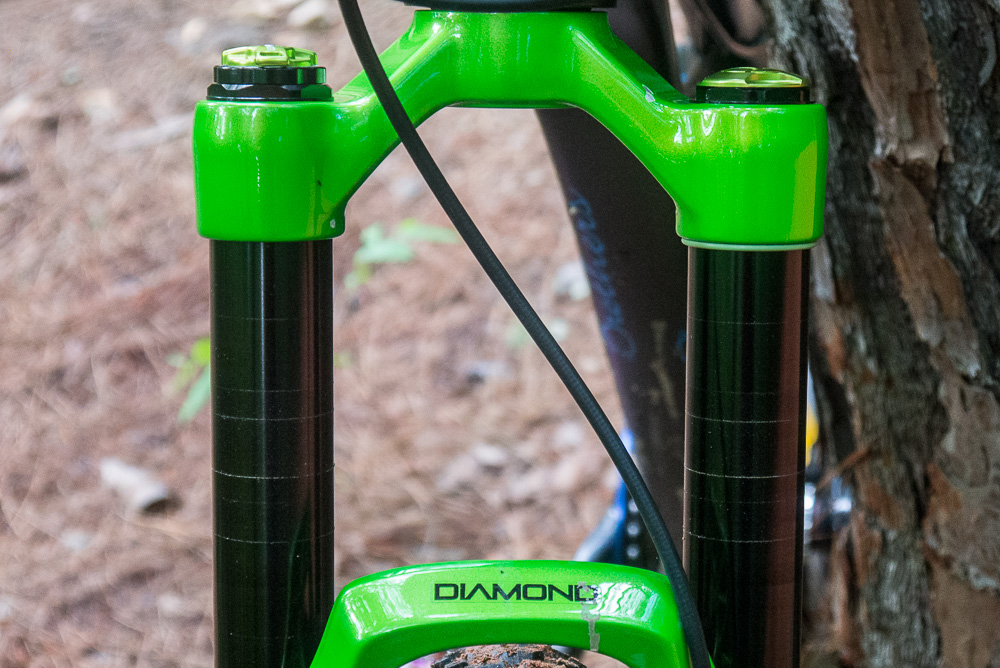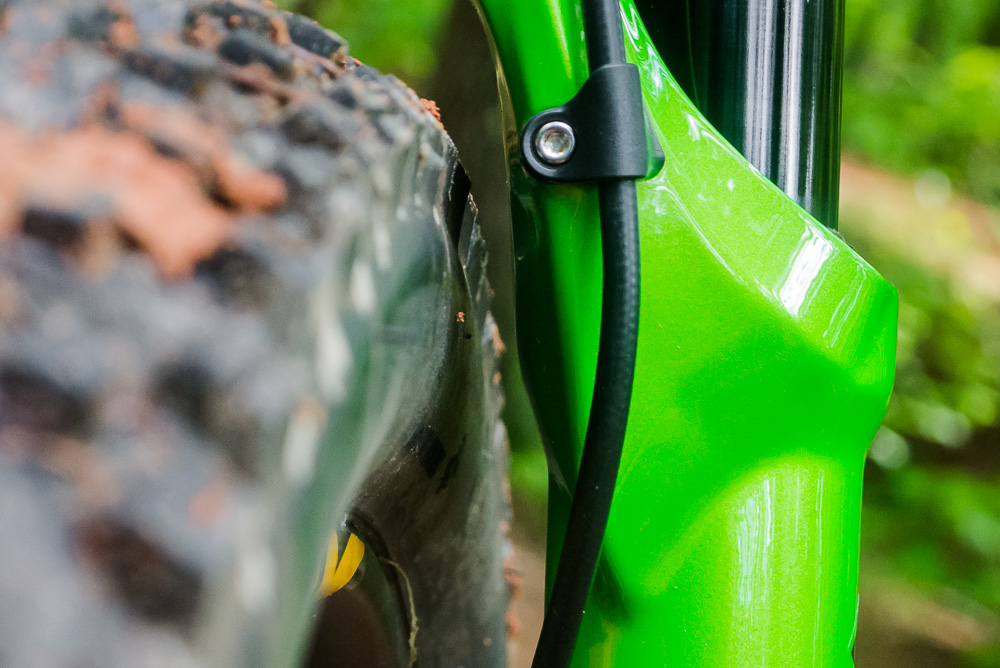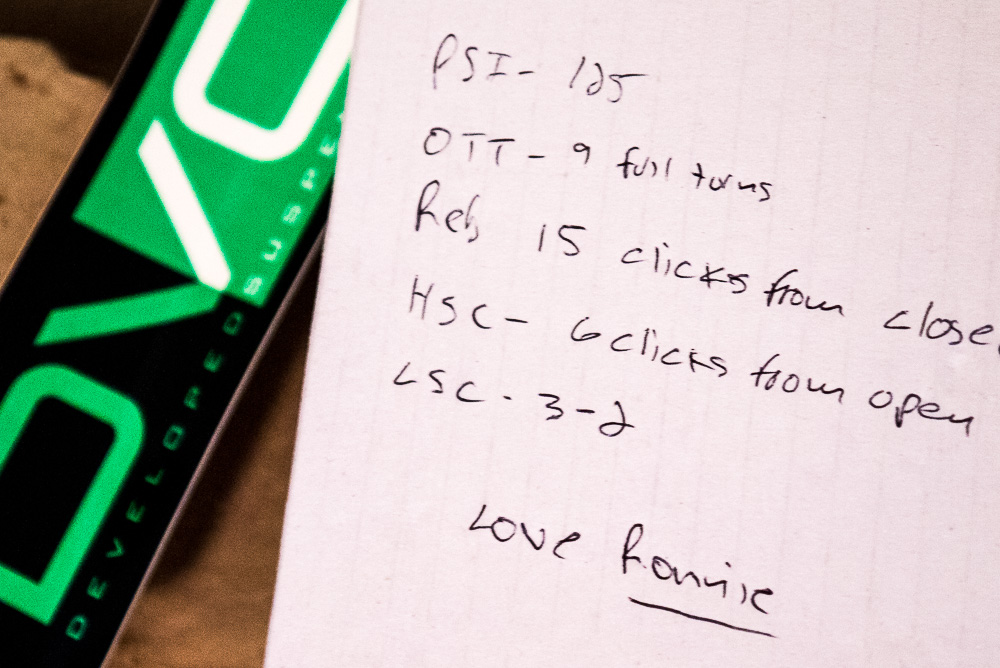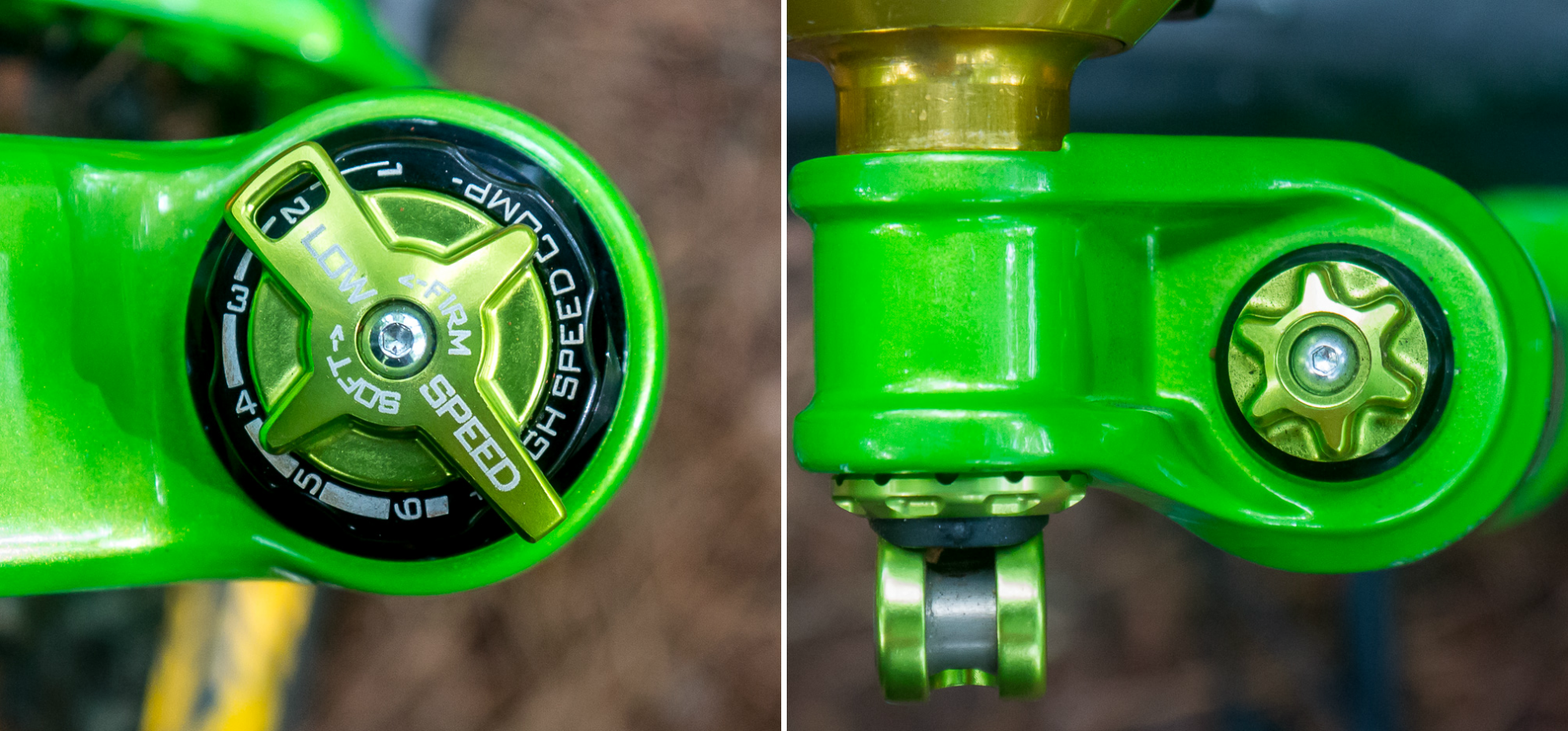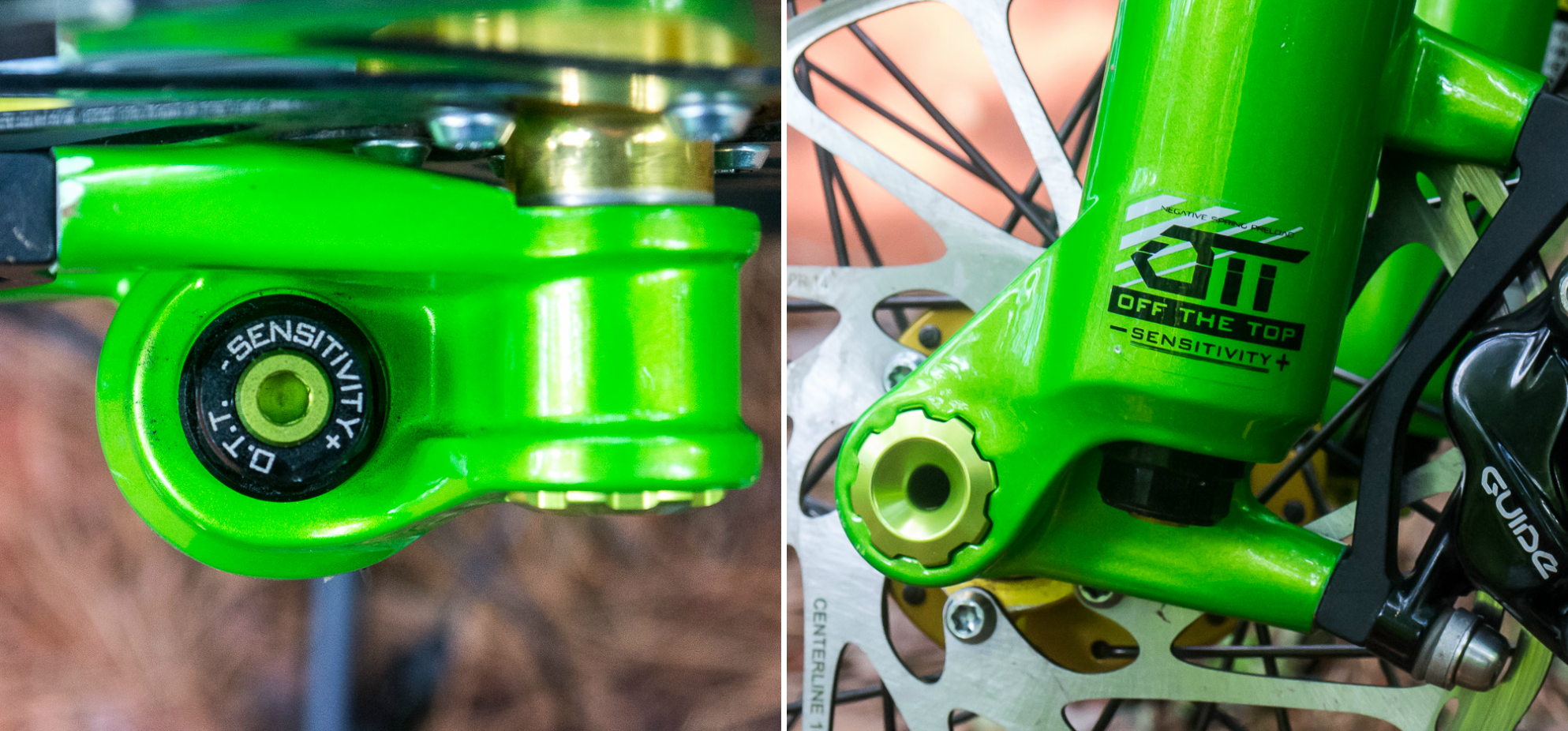DVO has made several green with envy since their entrance into the suspension marketplace. Though a somewhat new company, they really aren’t… well, in experience anyway. I was wrenching in a shop when mountain bike suspension first reared its springy head and recall when Marzocchi and the ultra-smooth & reactive Z1 Bomber entered the market. Everything on the market “worked”, but the Bomber was a performance game changer. Despite Marzocchi being a much smaller company, even with a few maintenance headaches and leaks, the Bombers just performed better. The founder of Marzocchi USA and the brainchild behind the Bomber line, (still considered one of the best performing forks of its day), Bryson Martin, along with many long time employees left the company due to struggles with the owner at the time, Tenneco, and soon after DVO was born. Quietly entering the almost monopolized market by the “big 2” was never their style and between the branding, their heritage, and that GREEN, it was game on… but does the performance back the hype?
Check out some of the ups and downs I had with the DVO Diamond and why it’s crucial to pay attention to the small details…
Having been on a Pike since the beginning, I was excited to get the much talked about DVO Diamond in my hands because I knew the seasoned Marzocchi guys were “one-uppers” back in the day when it came to performance. DVO really has the look down, but behind all of that green is where the real party is. If you want this fork, you’ll need to know how to read or have access to YouTube (and all of their well done set-up and maintenance videos), because it’s a requirement to set this fork up. It’s not hard, you just need to know some basics of what each knob does and maybe most importantly, pay VERY close attention to which direction to turn the knob for a given adjustment… (rather than assume like some know-it-all guy writing a review on it).
I went through a short weight weenie phase many years ago and since, have been far more concerned with performance & durability over weight. When I saw the DVO was 200 grams heavier than my Pike, I began to feel that youthful urge to thumb through the SRP ti bolt catalog again (told ya it was a long time ago). Because I’m not a patient person when it comes to shiny new things, I didn’t weigh the fork until after I had ridden it for some time. Honestly, I didn’t notice the weight difference prior to weighing it. After weighing it, I immediately headed back out… and still didn’t notice it. So there ya go.
DVO sent us the 140mm travel 29er varient of the Daimond and I used the fork to host multiple wheels and tires. The 29er fork was strapped to the Industry Nine Trail S wheels we reviewed back in March as well as some fun-size hoops with Atomik’s carbon Chubby 27.5+ wheels. Pictured above is the clearance with the midfats, and they have yet to rub after many miles of hard riding.
If you want to get a little taste of how credible the crew at DVO are, all have been together for decades working with suspension. Former DH & XC pros, Trans-Alp vets, and even the “new guy” who left me an endearing list of suspension settings has had dirt under his nails with this crew since 1998.
So, this is where I got a little ahead of myself. As someone who has played with bike parts for the majority of my life, I quickly checked the website and adjusted the air pressure according to my weight and headed out. Well, had I actually read the entire setup instructions, I would have discovered that you have to first back down the high & low speed compression all the way before pumping away. I also learned to be mindful on which way to turn which knobs for a given adjustment. When you do make it to their Tech Site, you are welcomed to one of the most comprehensive and easy to navigate tech rundowns, I’ve ever come across… with videos for each section!
The Diamond is a very adjustable fork, but has no lockout or “ride modes”. Though some may be intimidated by the fact this thing has 5 different things to adjust when setting up, their setup guide takes you in a “hand-holding” order of steps that should get you pretty dialed into a starting point and the knowledge of what to fiddle with after that.
The high & low speed compression adjustment is one of those knobs you need to be aware of what direction to turn it. To DECREASE compression damping, turn it CLOCKWISE. Though I am a set-and-forget kinda guy and have never really used ride-modes or lock-outs for other than the occasional fire road, (mainly because I know I’ll forget to switch it off during down time), I did enjoy playing with the low-speed compression keeping it light when riding my local rocky & rooty trails… then cranking it up when hitting the adjacent jump run where you don’t want it too soft to prevent the front end from diving too fast when going hard into berm after berm.
The rebound turns in the normal direction for increasing or decreasing the return speed. Even better, in case you fall above or below the weight ranges, or you find yourself needing even more compression or rebound range, they offer custom tuning and an alternative “Compression Loader”. That’s pretty damn pro right there!
It seems everyone has to have a special feature to stand out from the competition, and DVO’s “Off The Top” (OTT) adjustment takes a little different approach. Some forks let you insert volume spacers to control how progressively the fork ramps up as it compresses and “ride modes”. The OTT adjustment affects how sensitive the fork is during the first 70mm of travel. The best way to explain it, is when a heavier rider is required to use a higher air pressure they loose some of the small-bump sensitivity. Lighter riders using a lower air pressure don’t suffer from this as much (since the fork’s air pressure is already low), so the OTT allows riders to soften the small bump sensitivity while keeping it at the ideal pressure. Personally, I found having it one rotation (out of 14) from full open let me increase the high speed compression a little rather than dialing it down as a sort of crutch to make the fork more plush over the small stuff.
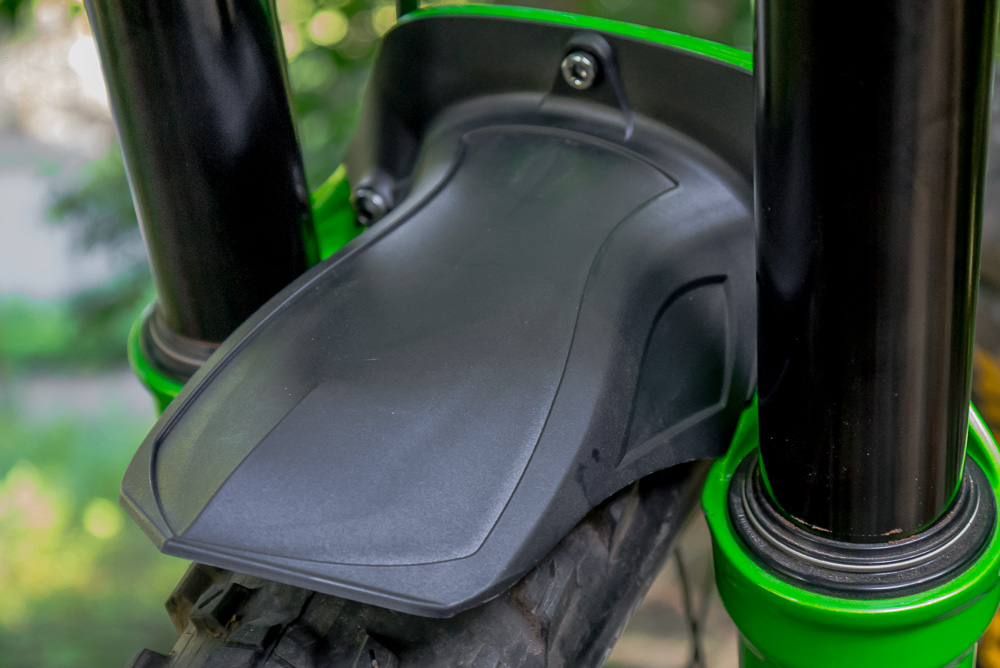
Riding Impression:
I really did have to tinker with the settings for a bit over several rides to better understand what I wanted because that is what you do, but once I found it, it was eye opening. (*eh hem*…especially after I went a little deeper into the instructions). I’ve mentioned before that I’ve always had an appreciation for properly setup suspension having had custom tuning on both bicycles and motorcycles in the past and can be a bit of a nerd when it comes to figuring out how to make things work well. Even having had experience with suspension setup, DVO’s tech site and videos of Ronnie breaking it down, (literally) took a lot of guessing out of it.
I really felt the OTT adjustment gave me the best of both worlds as it gave me enough small-bump sensitivity while letting me set the compression and rebound damping to prevent the fork from “packing down” during repeated hits. The type of riding this fork is designed for, especially at an endurotastic race pace is to gobble up anything in your line while keeping you in the most stable platform when entering & railing through those gut sinking g-outs. However, having a fork that is too linear (when the fork doesn’t ramp up enough through its travel), makes it feel “wallowy” due to premature dive. Having it too progressive (ramps up too fast), doesn’t let you use enough effective travel unless you lower the pressure which causes too much early travel. The OTT lets you set the fork where it needs to be and tweak what that 1st 70mm is going to do. I would sofeten the OTT (almost to max), and the fork was eating the chattery stuff so much better, but wasn’t blowing through the travel on the medium to big stuff.
Setting the air pressure was easy and keeping it within the recommended range and checking the static sag was a great starting point.
In retrospect, the DVO Diamond was the most reactive “off the shelf” fork I’ve ridden. To put it in perspective, there are a few sections of my local trail that have a wider and faster line that 90% of riders never take due to how sketchy it is. Hitting a bunch of ill-timed rocks that send you into sideways off-camber roots at speed rather seems less popular than the smooth and slightly tighter lower line most take. However, when your suspension is dialed, hitting that stuff makes you giggle. The Diamond whipped that section into cream. Compared to almost everything else I’ve ridden over that section, (I use this section, along with many others as a baseline when comparing how products perform in the sake of consistency), it took that sharp bite out you often expect when running the “right” pressure. My Pike feels almost as good (less refined if you will), on this section, but that was after it was broken in, had some air volume spacers added, and run on the plush side. I always have a shock pump in my pack so I can add about 10psi to the Pike when it’s time to rail the jump line. I never felt the need to do this with the DVO.
Stay tuned as we’re not done with this fork yet. We have a little “fun” project in the works that we’re pretty excited about…
